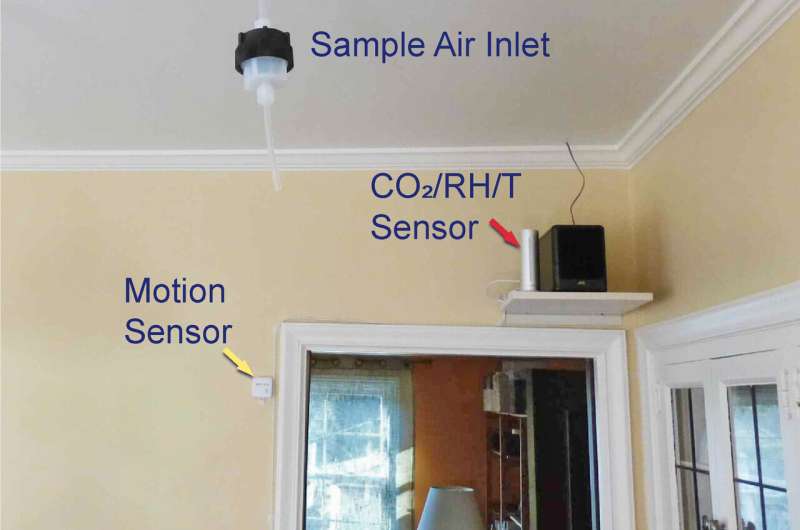February 4, 2021 report
Measuring ozone chemistry in an occupied residence

An international team of researchers has taken a look at the amount of ozone in an occupied residence in order to measure both ozone and volatile organic compounds (VOCs) associated with chemical reactions with ozone. In their paper published in Proceedings of the National Academy of Sciences, the group describes their study of the level of ozone and VOCs in an occupied residence.
Ozone is a toxic gas with a strong odor in large concentrations. In addition to its direct impacts on human health, the gas has been found to play a role in the production of other toxic chemicals when it reacts with other chemicals in the environment (including homes). The researchers with this new effort noted that most research looking into the amount and impact of ozone in the home actually takes place in laboratory settings. To find out if findings in the lab agree with a real home environment, the researchers enlisted the assistance of two volunteers living together in a single-family home in California. Sensors were placed around their home and the residents gave the researchers periodic access to the sensors. The test period was conducted over eight weeks during one summer.
Sensors for the test were placed in the kitchen, basement, attic, bedroom, the subfield and the garage—other sensors were placed outdoors around the house. Ozone levels were measured by monitoring ultraviolet light absorption while VOC levels were determined by mass spectrometry.
The researchers found that ozone levels in the home were generally lower than outdoors, though it varied from room to room. It also varied by time of day. They noted that the people living in the home opened the windows in some parts of the house during the day and closed them at night, which led to increased levels of ozone in rooms with open windows. They also found what they describe as a "strong influence of off-body skin lipids on indoor ozone chemistry," resulting in the formation of multiple VOCs, which they note were found to be at surprisingly high levels considering the low levels of ozone in the home. They also found that VOC production persisted even after the residents vacated the house for five days—additional evidence of VOC formation due to ozone interacting with human lipids.
More information: Yingjun Liu et al. Observing ozone chemistry in an occupied residence, Proceedings of the National Academy of Sciences (2021). DOI: 10.1073/pnas.2018140118
Journal information: Proceedings of the National Academy of Sciences
© 2021 Science X Network




















